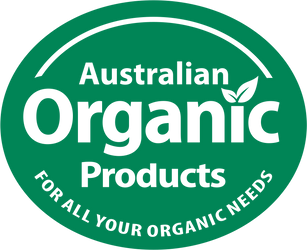
What is the Australian Healthy Food Guide: Everything You Need to Know
We all know we should be eating a healthy and well-balanced diet, indeed, it's drummed into us from being children! But what is a healthy and balanced diet? With the wide variety of diets available to follow now, from the keto diet to the paleo diet to the vegan diet, it's becoming less and less clear what healthy eating actually is.
In a world of competing ideas over what healthy eating is, we went back to basics and looked at the five food groups and what they mean to the Australian dietary guidelines laid out in the Australian guide to healthy eating, also known as the Healthy Food guide.
In this article, we're going to go over what the Australian Guide to Healthy Eating is, what it teaches us about healthy eating, and how we can use it to maintain good health and create lots of delicious healthy recipes.
To find out more, keep reading.

What is the Healthy Food Guide?
The Australian Guide to Healthy Eating is essentially a graphic plate-style design that communicates to Australians how much of each of the five food groups they should be eating relative to the others.
The guide's advice is clear: we should be eating a diet rich in whole grains, vegetables and legumes, while also consuming smaller amounts of fruit, dairy products, and protein foods, like meat, fish, nuts and seeds.
As well as the five food groups, the food guide also advises we use small amounts of oils and fats and limit our intake of sugary and junk foods.
The guide relates to the Australian dietary guidelines and is laid out to ensure these guidelines are met by the diet the guide advises we eat. The dietary guidelines are as follows:
- To promote health and wellbeing
- To reduce the risk of diet-related health conditions, like high cholesterol, obesity, and high blood pressure
- To reduce the risk of chronic diseases, like type 2 diabetes, cardiovascular disease, and some cancers

What does the Healthy Food Guide teach us about healthy eating?
The 'healthy eating' Australian guide teaches us a number of key facts about healthy eating in the food it advises that we eat. These are as follows:
- It teaches us the importance of a diet rich in grains, particularly whole grains. Grains are important sources of a range of nutrients. They are high in fibre which supports a healthy digestive system, they contain B vitamins which have an effect on energy levels and cell function, and a diet rich in whole grains has been linked to reduced risk of some chronic illnesses.
- It reminds us we need lots of vegetables in our diet. We are told from being children the importance of vegetables, but sometimes it is difficult to get enough veg into our diet. The healthy food guide reminds us we should be eating lots of vegetables because of the benefits to our body, such as them being great sources of a long list of vitamins and minerals and their dietary fibre content.
- It advises we eat less of the bad stuff. We have always known that we should limit sugary and junk foods in our diet due to the high sugar, fat, and calorie content, but the guide also reminds us to lower our intake of dairy products and fruits too. This is because dairy products tend to be high in saturated fats which can lead to increased risk of heart conditions, and while fruit is a great source of vitamins, minerals, antioxidants, and fibre, excessive intake, particularly of dried fruit and fruit juices, can lead to consumption of high amounts of sugar. While both of these groups are necessary for a balanced diet, care should be taken to not overconsume.

How can I use the Healthy Food Guide to create healthy recipes?
While the healthy food guide graphic might seem slightly overwhelming at first as you try to work out how to fit every food group into every meal, the developers of the guide know that that is impossible. The five food groups are expected to be eaten in their relative amounts across the week, not in every meal. While you should aim to eat mostly whole grains, like brown rice, wholemeal pasta, and wholegrain cereals, along with lots of veg and legumes, every meal is unlikely to be a perfect replica of the healthy food guide, and that is okay.
Conclusion
The Australian Healthy Food Guide is a great base for all kinds of healthy living. It provides an accessible and easy way to understand healthy eating and give us the basics of how to follow a well-balanced diet.
Try planning your next week's meals around this graphic and see if you feel better too!
Frequently Asked Questions
What is the Australian Food Guide?
The Australian Guide to Healthy Eating is a graphic food selection guide that lays out the five food groups and how they should be consumed relative to each other to form the basis of a healthy and well-balanced diet. The guide advises we eat a diet rich in grains, vegetables, and legumes while consuming protein, dairy products and their alternatives, and fruits in smaller amounts too.
What are the Australian health guidelines?
The Australian health guidelines are the guide by which the healthy food guide is created and are as follows:
- To promote health and wellbeing
- To reduce the risk of diet-related health conditions, like high cholesterol, obesity, and high blood pressure
- To reduce the risk of chronic diseases, like type 2 diabetes, cardiovascular disease, and some cancers

Leave a comment